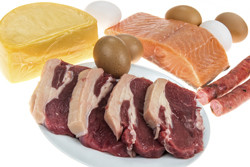High protein diet, less obesity
High protein (HP) diets may help prevent obesity and non-alcoholic fatty liver disease (NAFLD), a condition associated with insulin resistance and metabolic syndrome. The gut and the liver are the key organs in nutrient absorption and metabolism. Both adapt individually to maximise processing and the liver exerts direct or indirect feedback control on gut function. With EU funding, the GLAPI project has studied the effects of an HP diet on hepatic lipid accumulation and obesity as well as gut parameters including intestinal mucosa and microbiota. The dietary experiments were performed on mice and linked to a clinical human study. The researchers fed mice combinations of high energy or low fat, 35 energy % and 10 energy % respectively and high (50 energy %) or normal (15 energy %) protein diets for 1 or 12 weeks. A large range of variables measured included gene expression and metabolic phenotyping in the gut mucosa and liver. Researchers characterised and analysed the microbiota, gut, liver, peripheral inflammatory state, body composition, food intake behaviour and fat production and breakdown in the liver. The different diets did not affect food intake. However, mice on the HP diet had a lower body weight and developed less adipose tissue for fat storage. High protein ingestion was associated with increased liver very-low-density lipoprotein (VLDL) levels and increased energy usage due to a hike in protein breakdown biochemical processes. Interestingly, the effects on humans were comparable but more subtle. In the gut there was an increase in protein catabolism with a HP diet as well as an enhanced lipid uptake but a decrease in lipid catabolism. Increased dietary fat changed gene expression of the intestine but increased protein only caused very modest modifications by contrast. Overall, the vast amount of GLAPI data indicates that an HP diet prevents development of adipose tissue and NAFLD in mice and human. Elucidating the underlying molecular mechanisms of these effects will further contribute evidence-based dietary advice in the combat against obesity and the metabolic syndrome.







